After swarms of locust swooped en masse on the Negev, a few manage to make way to center & even north towards the Galilee.
Readers from all over country share their pictures.
Shahar Chai
Despite an additional round of insecticide spraying in the south, Saturday saw swarms of the reddish grasshoppers descend upon the country, with some successfully making their way out of the south and into the center, and even northern parts of Israel.
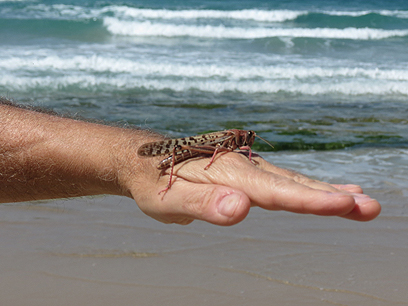
Locusts at Tel Aviv’s beach – Photo: Adrian Rozner
Ynet’s Red EMail received countless photographs of the locusts from all over, all the way from the Negev in the south, through Tel Aviv and Ben-Gurion Airport and even a few from Haifa, Nahariya and Tiberias in the north.
According to the Agriculture Ministry, “These are a handful of locusts that have already been in the country since the beginning of the week.
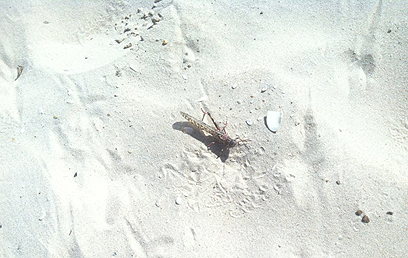
Ashdod beach – Photo: Gali Buknick
“In small numbers they are harmless,” the ministry promised, expressing hope that “from this point on, we won’t see any more massive swarms.” It cited the completion of an additional round of insecticide fumigation Saturday.
“As of yet, we have not registered any additional swarms as arriving,” the ministry hopefully added in a statement.
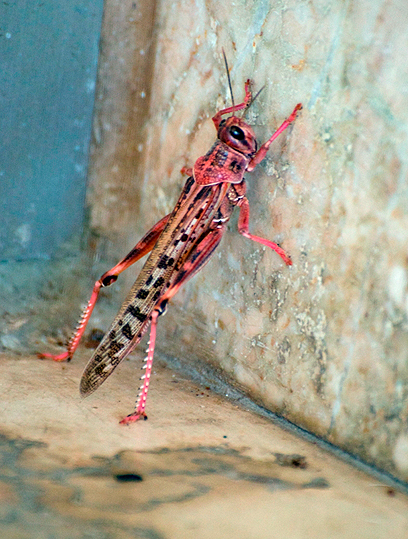
Herzliya, north of Tel Aviv – Photo: Dan Lazer
Those locusts already in the country are described as a small pack and not a massive swarm. This group arrived in the Negev earlier this week causing massive damages to crops, estimated at the hundreds of thousands.
Apparently strong winds aided some members of this locust pack in making their way to the center of the country, with a few minor swarms successfully even making it all the way to the north.
It is possible we are currently dealing with new specimens, and not the same ones we saw at the beginning of the week,” Miriam Freund, head of the Agriculture Ministry’s vegetation protection services said.
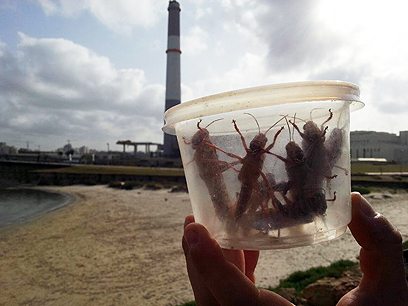
In a box, in north Tel Aviv – Photo: Yakir Cohen
“However,” she added, “there is still no cause for concern, as in small numbers the locusts are harmless.” She stressed that reports of small numbers of locusts in the center and even in the northern Golan Heights were registered since the beginning of the week, apparently also as a result of strong winds.
Freund further explained that currently there is no risk of a huge swarm of locust descending on the center of the country, as “those spotted are acting more like grasshoppers.
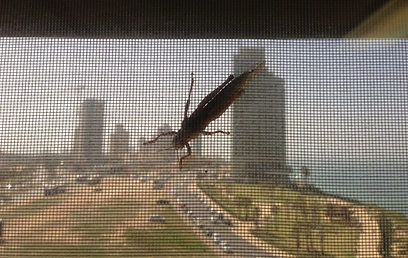
Netanya grasshopper – Photo: Shomri Ben David
“There is always a risk when and if they arrive in huge packs; in those cases there is a need for pesticides, exactly as we did in the south.”
In the Negev
On Friday, a massive swarm crossed the Egyptian border and arrived in Israel. The group passed the Nizana area and is currently in open areas in the south, near Mount Keren.
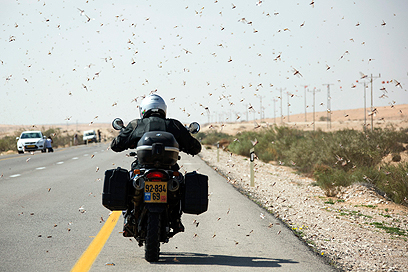
Negev swarming with locusts – Photo: EPA
This current swarm is smaller in size than the one which arrived at the beginning of the week.
Friday also saw an additional round of pesticide fumigation, both on the ground and via crop-dusters.
Friday’s round followed Thursday’s massive operation, in which Agriculture Ministry officials covered more than 10,000 dunam (2,500 acres) along the Israeli-Egyptian border with anti-locusts pesticides.
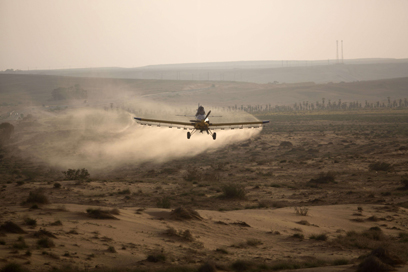
Crop-dusting – Photo: AFP
According to the ministry, the operation succeeded and managed to destroy most of the original swarm that arrived in the Negev at the beginning of the week.
There were even those who found pleasure in the locusts visit.
Before the crop-dusters managed to take flight on Thursday, a few Yemenite families arrived to gather the grasshoppers, an important and rare ingredient found in a traditional Yemenite meal.
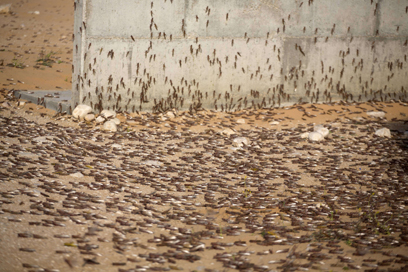
Holding on – Photo: AFP
According to them, these are kosher insects, completely edible and most enjoyable.
View original Ynet publication at: http://www.ynetnews.com/articles/0,7340,L-4354219,00.html







 Israeli New Shekel Exchange Rate
Israeli New Shekel Exchange Rate